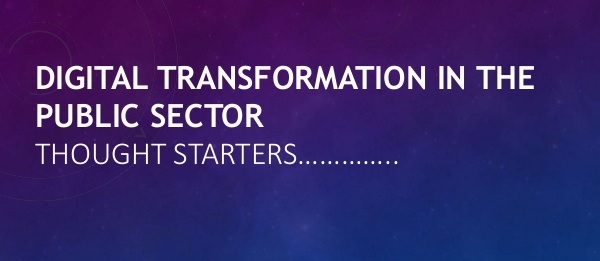Automation will play a big part in the successful transformation of your organisation, and a major element of this will be your digital strategy!
If you don’t get this right, you’ll get everything else wrong!
 The nine-to-five working day is dying out as organisations become increasingly globalised. It is rare today that employees shut off their emails, calls and ideas at five sharp, because someone somewhere wants to communicate with you, or do business with you, or access some information, or send some information to you, 24/7. Regardless of the time, for your customer it’s still a working day, be it in the middle of the night or somewhere else in the world.
The nine-to-five working day is dying out as organisations become increasingly globalised. It is rare today that employees shut off their emails, calls and ideas at five sharp, because someone somewhere wants to communicate with you, or do business with you, or access some information, or send some information to you, 24/7. Regardless of the time, for your customer it’s still a working day, be it in the middle of the night or somewhere else in the world.
This is the future of work and it’s possible today with the advent of new technologies that can make organisations far more productive. It means a world where connectivity, mobility, social networking, and the use of so called ‘big data’ are the potent collaborators in a very dramatic way that will change our lives quite considerably.
Organisations – big or small – must understand the demands of the digital world and, more importantly, use them to deliver a brilliant experience and service for them and their customers. This means placing such innovation at the heart of their business and using it to enable a complete re-think of their products, services, processes and systems that underpin their organisation. Another way of describing this is “joining up all the dots”!
 Waking up to Digital
Waking up to Digital
A recent survey of 450 digital transformation projects around the UK revealed that:
- 54% of companies were worried that their business would go bust if their digital transformation failed
- A staggering 89% believe that their industry is being disrupted by digital technology
- Worse, 90% of digital projects fail to meet expectations.
Too many organisations are tempted to see digital as a quick fix. The best organisations frequently use digital technology transformation programmes to test even more fundamental issues about their business – for example:
- What is our purpose?
- How do we articulate that to customers?
- How do we relate to our customers?
- Are we enabling our people to make the best use of technology?
- Are we in the right markets?
- Should we partner, diversify or look for a merger?
- Where do we want to be in five years’ time?
Obtaining answers to these questions, organisations are far more likely to achieve the transformation results they want and to get real value for money for the changes they are looking to implement.
Agility in the new digital world
The pace of change required to transform effectively means businesses must significantly increase the speed at which they adopt change initiatives. To thrive in the digital world companies, need to streamline the rigid structures and legacy processes that exist in their organisation, and ultimately change the way their projects are run, and decisions are made.
Companies have no choice but to embark on a digital transformation. The key is being able to keep up with and exceed customer expectations. For many through, it’s a question of how they do this and when because very quickly, today’s technologies will become tomorrow’s standards.
There is no ‘magic bullet’. The starting point for companies is to review the skills they have at their disposal. Very often, the talent required to deliver these new capabilities is hard to come by. It can also be so easy for companies to apply outdated project management methodologies and bog themselves down in too much complexity.
 Public Sector
Public Sector
The public sector is also embracing such technologies and much has already been achieved – but the real advances are still yet to come.
To date, many local councils have run with the ‘Digital by Default’ agenda, which has made government services accessible via digital channels. This has now evolved into the ‘Digital Service Standard’ which is a set of 18 criteria to help local government create and run good digital services.
All public facing transactional services must meet the standard. It’s used by departments and the Government Digital Service to check whether a service is actually good enough for public use.
Whilst this is good in that it builds in a consistent level of approach and does cover many services, from big data analytics to identifying (and making use of) empty homes for example, it doesn’t go far enough.
The scale of financial changes facing local authorities means that there are few efficiencies still to be found in doing the same things faster, better and cheaper. Instead, radical transformation is required!
Automation will be a part of that change. The high volume of repetitive tasks processed in council back offices – which neither make best use of employee’s skills and time, nor offer job satisfaction – means that there is huge potential for automation to make a significant difference in this sector.
One good example here is the processing of council tax payments, which once automated has seen savings of up to 80% achieved, with an equitable cost per transaction reduction from £1 to 20 pence. And this is just the tip of the iceberg. There are such leading-edge automation software systems already available that can replicate a wide range of core transactional processes – with 100% accuracy and major reductions in the time taken.
The introduction of such systems can allow councils to re-direct employees to focus on more complex tasks or much-needed front line citizen and customer services.
A big part of this is sharing information. Why re-invent the wheel when the wheel already exists? Unfortunately, there are many councils who actually balk at the idea of actually sharing their knowledge, their solutions, their time or their employees. The consequence being that potentially rewarding benefits can be lost.
Ultimately, with the right approach to sharing learning and the pooling of experience and knowledge, the UK public sector can benefit from a digital transformation technology that is only going to become more prolific in the coming years.
Getting to grips with the ‘On-The-Go-Economy’
The key with any successful digital transformation is being able to drive as much value as possible out of your data.
However, trying to accomplish this is often hampered by the very processes that they undertake. Complex, paper-based processes can be a significant burden, and end up being a stumbling block to gaining an insight from the data that is available.
Any organisation, be it in the public or private sector, needs to operate strategically, adding value to their business and increasing the importance of their role within the organisation’s success. Digital transformation is an important element of this and moving to a range of digital solutions is just the start of an overall transformation strategy.
Technology.. and the Data ‘Chaos’
A key part of this ongoing transformation and the impact it’s having is the On-The-Go-Economy (OTGE).
OTGE stems from the rise of internet and mobile connectivity, and the impact this has on both our working and social lives.
What this has created is a fascinating set of societal, cultural and business challenges which all come together to create a form of “virtual instanty” – we need to do everything, and we need to do it straight away.
In OTGE, time has real value, both economically and psychologically. It therefore follows that organisations are expecting their employees to be able to manage matters in the moment, wherever they may be.
The next stage is understanding what we mean by Innovation and Change.. and then looking at People and Communication..

